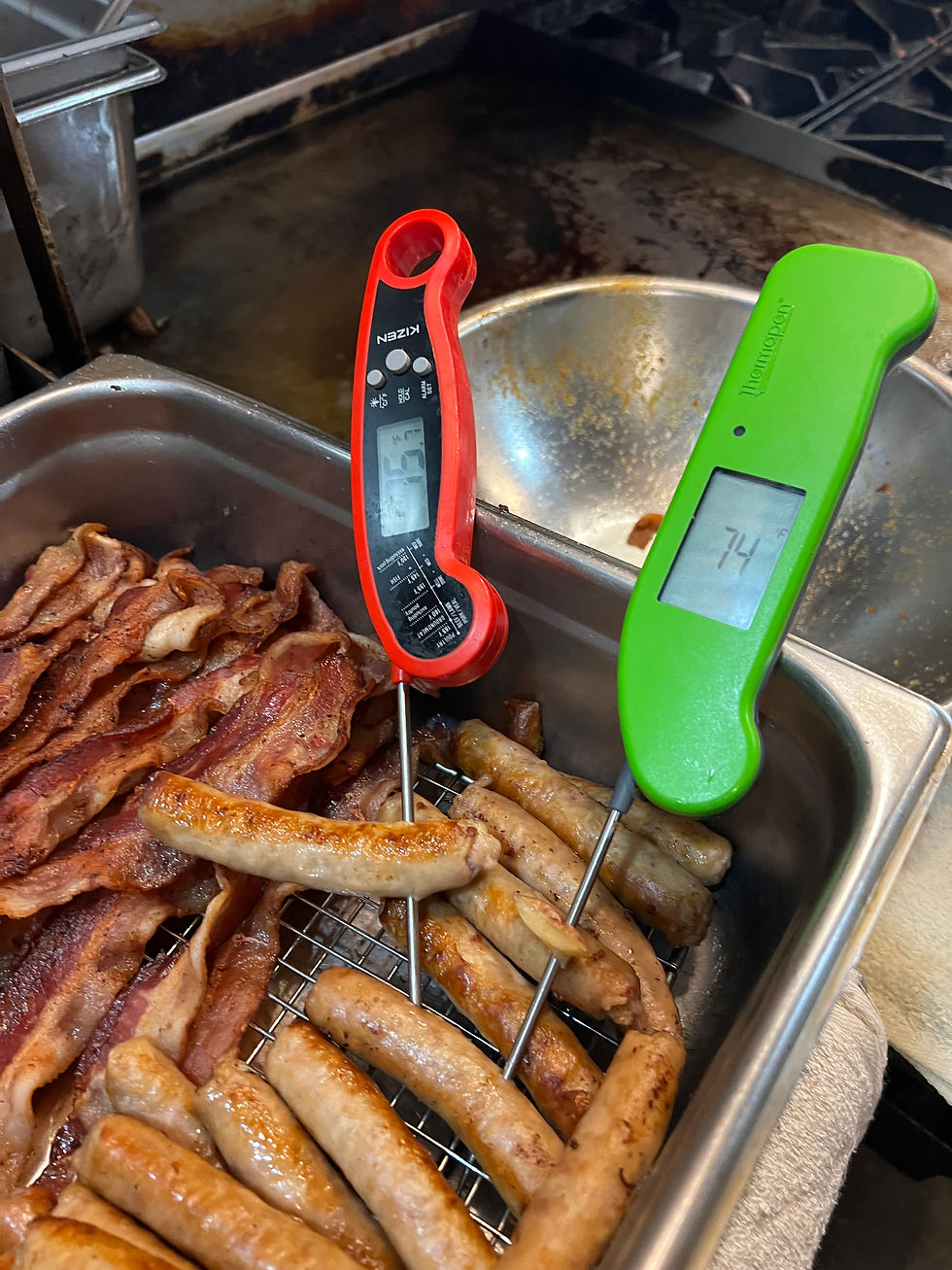Swarming Fruit Flies & What To Do
- mcfoodsafety
- Jul 19, 2021
- 4 min read
Humans and flies have been interacting with each other since the beginning of time; like peanut butter and jelly, pizza and beer, Ben and Jerry. As with all living things, flies do have their purpose in our ecosystem, yet are unwelcome guests in our kitchens. Flies carry and transmit disease. They vomit digestive enzymes on food and lay their eggs in our ripening fruit.

Small flies, Fruit Flies and Phorid Flies, mysteriously materialize in large swarming groups throughout a facility, usually when the weather is warming up. These small flies are commonly found where there is exposed fruit or vegetables, in garbage and composting areas, and in the bar. I still find them in one facility drawn to sealed bottles of Worcestershire sauce in a storeroom.
If you have an active small fly problem, you will want to begin an investigation, which will likely begin with possible breeding locations. Keep in mind that the larvae need moist, decaying, organic matter to survive. The larvae feed on the sediment of old food debris and soil.
Back of House
Look at the areas where you store your fruits and vegetables that are not under temperature control (below 41F). Consider refrigerating these products.Check the cleanliness of the garbage cans inside the facility.Check the mop sink and the mops themselves. Eliminate wet mops, towels, sponges and other moisture rich areas.Clean out the dishwasher scraper – not just the strainer.Check the dish area, especially the pre-rinse space, as food typically is sprayed off the plates sending food all around this area.Look under equipment and pay close attention to equipment that doesn’t move often, such as shelving, tables, coolers and mixers.Check for loose and cracked tiles. If possible you want to replace or at the least, clean and repair them.Common places for breeding are drains. Drains supply a hospitable environment for larvae. The eggs are laid in the gelatinous bio-film found in drains.Return empty beverage cans/bottles often. Do not store in the facility.
Front of House
Check the floor drains in the bar.Check the soda guns, the waste tubing and the soda gun holsters for slimy build-up – clean often.Check protocol for fresh fruits used in the bar. Are they kept cold?Check for cleanliness of surfaces (e.g. shelves and flooring in bar, waitress station, and bussing stations).Do a walk-through of the dining room, looking for areas that could be difficult to clean or are high traffic areas for food or beverages.Check indoor plant water basins and soil.
Outside
Check the dumpster and dumpster area for cleanliness.Keep all dumpsters and garbage containers as clean and dry as possible. All dumpsters need tight fitting lids and should be emptied in a timely manner.Check your recycling bins and area for cleanliness.Move any composting or piles of organic decaying debris, such as raked wet leaves, away from the building.Make sure all windows and doors have screens that are in good repair.Position dumpsters as far away form the kitchen door as possible.
Action Plan
In areas where you find food debris inside the facility:Move all equipment and clean the floor.Scrub the legs of the equipment; especially hard-to-reach areas that brooms and mops tend to miss behind it as well.Regularly schedule a thorough cleaning of garbage cans. Bags can leak and hundreds of larvae can develop in the smallest amount of food.
If the dumpsters are soiled and the area disorganized:Keep the dumpster itself on a cleaning schedule. I used to be able to call the service and ask them pick it up and do a major cleaning and disinfecting when it got funky.Make sure the dishwasher is getting all the garbage into the dumpster. Include maintaining a clean dumpster area as part of your dishwasher’s job. This may ensure all the garbage gets in the dumpster each time.Insist that the lids fit properly and are not damaged, preventing proper closure.Clean up leaf piles when wet and decaying and dispose of them in the dumpster.If you are recycling, try to keep the items out of the building and away from the structure. The smallest amount of old beer in a bottle can be a food source can create food for breeding adults.Monitor the compost closely. This is a potential hot spot.
If you suspect your drains are breeding sites: You can pour hot water or a drain cleaner, down the drain and scrub with a hard bristled brush deep down into the drain and piping.
*You can check it by placing some tape over the opening (leave half opening for airflow). If you find these flies stuck to the tape, you have discovered one source.
Call a professional pest control company. There are many gels, liquids, and foams designed specifically to address drains in commercial kitchen.
The only way to get rid of a small fly problem is to eliminate the food source. The typical adult Fruit Fly lives 30 days and will be the tip-off that a problem is brewing. A female will lay approximately 400-500 eggs at one time and will do that several times during her lifespan. It will prove to be invaluable if you choose this preventative approach. Most restaurant owners have experienced Fruit and Phoric Flies in their facilities. Even though you keep your restaurant clean and orderly, a bartender swatting at small flies in the bar can leave customers uncomfortable.



Comments